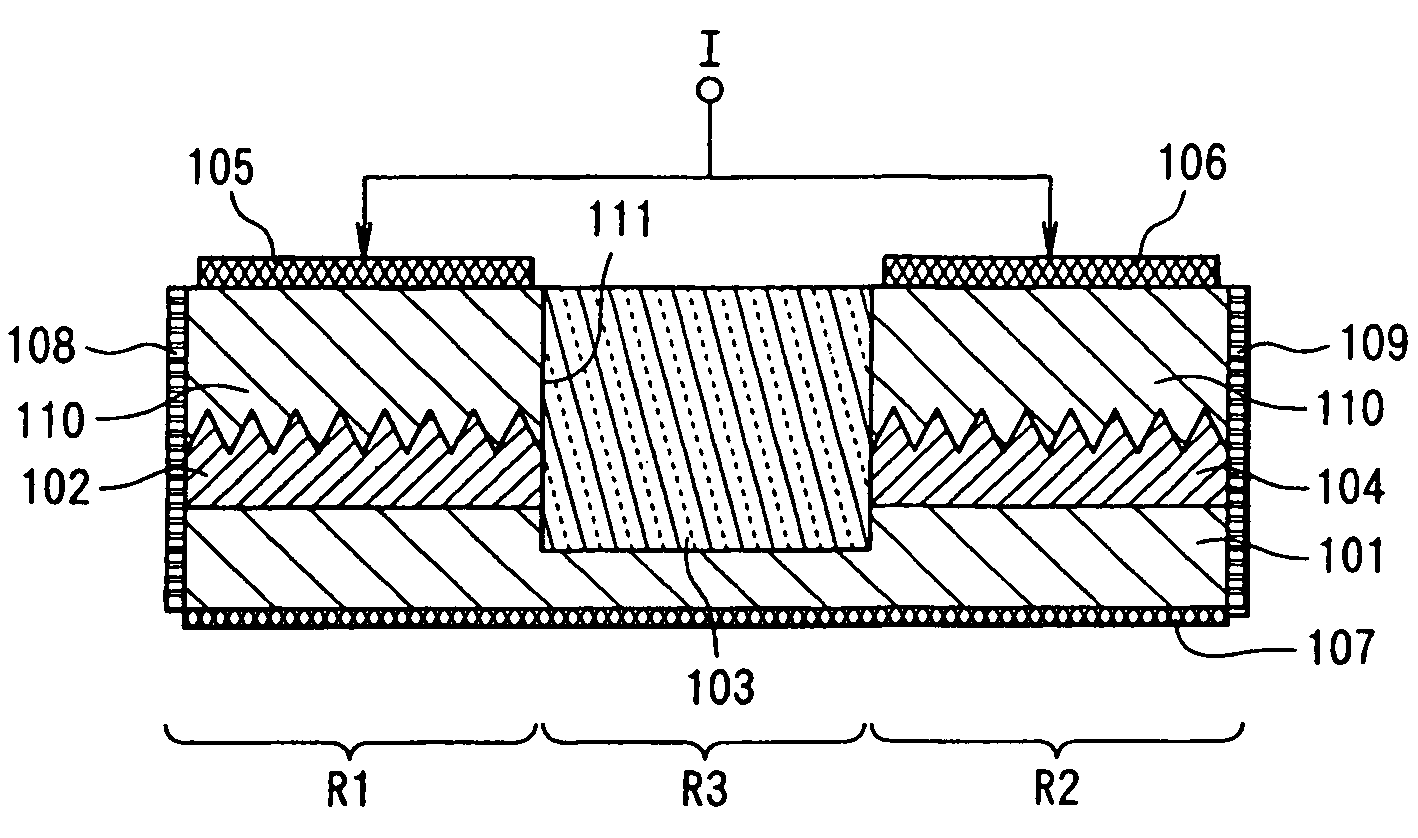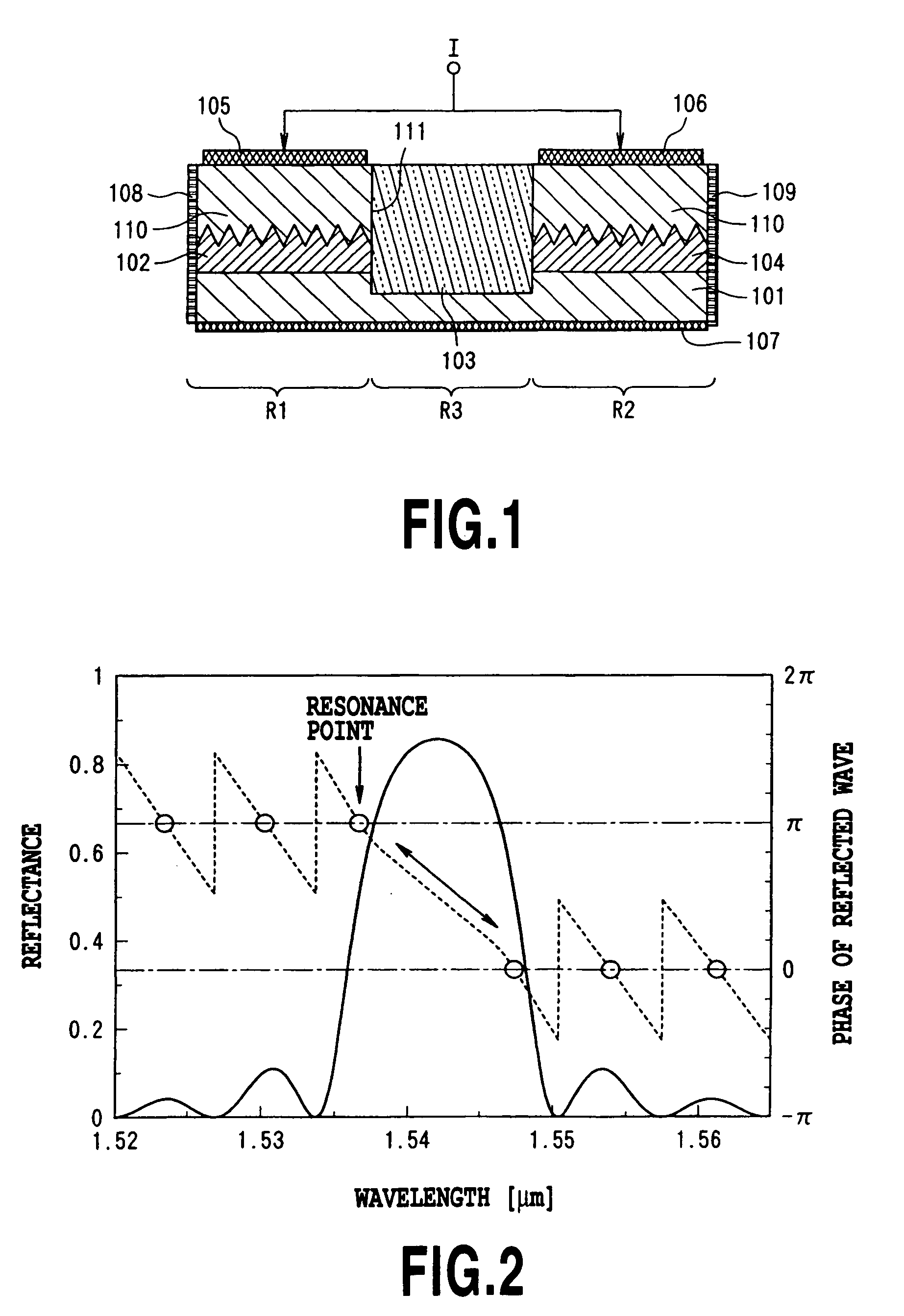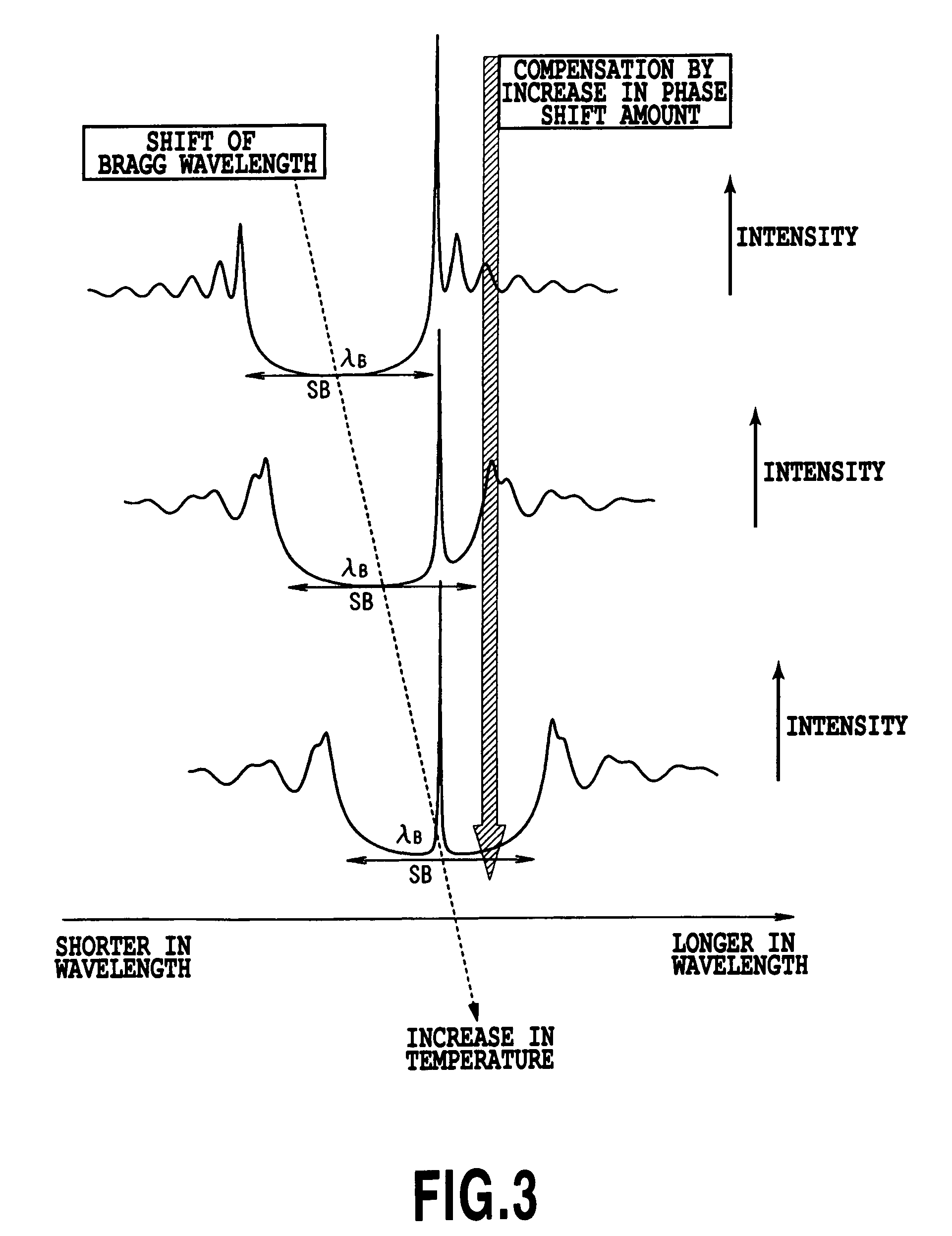Optical semiconductor device and optical semiconductor in tegrated circuit
a technology of optical semiconductor and integrated circuit, which is applied in the direction of semiconductor lasers, instruments, optical elements, etc., can solve the problems of increasing power consumption, complicated device structure and control, and difficult to develop such a new semiconductor, and achieve the effect of suppressing the loss of refraction
- Summary
- Abstract
- Description
- Claims
- Application Information
AI Technical Summary
Benefits of technology
Problems solved by technology
Method used
Image
Examples
first embodiment
[0082] Several embodiments in accordance with the present invention will now be described with reference to the accompanying drawings. First, applications in a semiconductor laser will be described as a first embodiment with reference to several examples. This embodiment makes it possible to control the temperature dependence of the oscillation wavelength of a semiconductor laser by combining the semiconductor laser with materials having different temperature dependence of the refractive indices.
second embodiment
[0083] Second, applications in an integrated optical waveguide will be described as a second embodiment referring to several examples. This embodiment makes it possible, when integrating a semiconductor optical waveguide and an optical waveguide having refractive index and temperature dependence different from those of the semiconductor optical waveguide, to reduce the reflection on the interface surface between these optical waveguides. In addition, by integrating the semiconductor optical waveguide and the optical waveguide having the refractive index different from that of the semiconductor optical waveguide, the embodiment allows an implementation of an optical waveguide having new characteristics that cannot be achieved by semiconductor-only configurations.
third embodiment
[0084] Furthermore, as a third embodiment, by inclining the interface surface between a semiconductor optical waveguide and an optical waveguide having a different refractive index, with respect to the waveguide direction, the waveguide loss due to the reflection and refraction between these optical waveguides can be reduced. Also, by integrating the semiconductor optical waveguide and the optical waveguide having refractive index different from that of the semiconductor optical waveguide, the embodiment allows an implementation of an optical waveguide having new characteristics that cannot be achieved by semiconductor-only configurations.
(Applications in Semiconductor Laser)
[0085] Semiconductor lasers of the first embodiment in accordance with the present invention will now be described with reference to the drawings. The first embodiment can provide semiconductor lasers capable of controlling the temperature dependence of the oscillation wavelength by combining materials differe...
PUM
 Login to View More
Login to View More Abstract
Description
Claims
Application Information
 Login to View More
Login to View More - R&D
- Intellectual Property
- Life Sciences
- Materials
- Tech Scout
- Unparalleled Data Quality
- Higher Quality Content
- 60% Fewer Hallucinations
Browse by: Latest US Patents, China's latest patents, Technical Efficacy Thesaurus, Application Domain, Technology Topic, Popular Technical Reports.
© 2025 PatSnap. All rights reserved.Legal|Privacy policy|Modern Slavery Act Transparency Statement|Sitemap|About US| Contact US: help@patsnap.com



